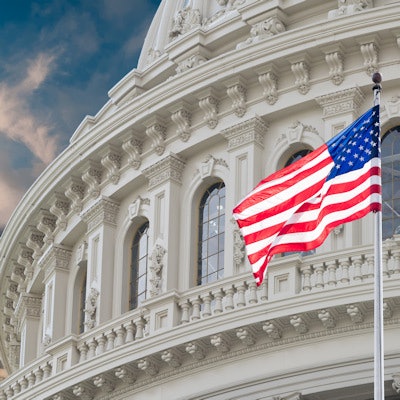
The U.S. government spent $4.1 trillion on healthcare in 2020, a growth rate of 9.7% that's twice the rate seen in 2019. The increase was driven by the government's response to the COVID-19 pandemic, according to an article published December 15 in Health Affairs.
Analysts at the U.S. Centers for Medicare and Medicaid Services (CMS) report that spending in 2020 accelerated from a rate of 4.3% in 2019. The growth was due largely to a 36% increase in federal expenditures for programs such as the Paycheck Protection Program and the Provider Relief Fund.
"Federal spending increased rapidly in 2020 as the government increased public health spending to combat the pandemic and provided significant assistance to health care providers," said statistician Micah Hartman of the CMS Office of the Actuary, in a news release.
Excluding spending for federal public health and other federal programs, total national health expenditures increased just 1.9% in 2020, reflecting less utilization of medical services and goods in 2020, according to the report.
That rings true in radiology, where the COVID-19 pandemic drastically impacted imaging volume for practices throughout the country in 2020, according to a study published in October 2020 in the Journal of the American College of Radiology. CT volume alone dropped 53% between December 2019 and January and October 2020, according to an analysis of the American College of Radiology (ACR) Dose Index Registry.
Significantly more medical imaging procedures were performed during the COVID-19 pandemic on older patients, males, and individuals in nonwhite racial groups, as well as among lower-income-earning patients. In addition, more individuals on Medicaid or who were uninsured underwent imaging.
Ultimately, the growth in total healthcare spending in 2020 reflected higher spending by the federal government for three main reasons, according to the CMS report:
- Provider assistance programs: Funding for the Provider Relief Fund ($122 billion in 2020) and Paycheck Protection Program ($53 billion in 2020) to make up for lost revenue and increased costs resulting from the pandemic
- Increased federal public health spending
- Growth in federal Medicaid payments due to faster enrollment growth and a 6.2-percentage-point increase in federal medical assistance percentage.
"The pandemic's impact on the overall economy was dramatic, causing the GDP to decline by 2.2% and contributing to the largest jump in the health spending share of GDP in the 61-year history of the National Health Expenditure Accounts," Hartman wrote.
The specific impact of the pandemic on health expenditures in 2021 remains unknown because of incomplete data, but there will likely be notable effects from the widespread vaccination efforts that began in the spring of 2021 and from the emergence of the Delta variant of the SARS-CoV-2 virus in the summer of 2021, the report noted.
"We do know, however, that the story that unfolded in 2020 and continues today is unlike anything that has happened in the past 100 years," the authors concluded.



















